How to make your own EM-1™ inoculant and Bokashi
Aloha thumbs and friends. I am back to give one of my biggest secrets away, it is my own homemade root inoculate or EM™/BAM(beneficial active microorganism) made with rice water, milk and sugar. There are many shelf bought version for ridiculous pricing, for those with the little know how to make ones own. House & Garden makes Root Accelerator,Hygrozyme, Sensizyme, Advanced Nutrients Voodoo Juice are some of the high priced products that my own home culture works as well as or even in some cases has even worked better. I know many growers that would not even think of culturing their own or even would have the know how to, but I offer you my knowledge for your own frugal organic gardening purposes. Not to mention how I have talked about recycling and composting with worms, now I will introduce you to the Japanese form of Bokashi Composting or fermenting and how to make your own home made cheap alternative Bokashi Buckets and Bokashi mix.
Wikipedia:
Effective Microorganisms, aka EM Technology, is a trademarked term now commonly used to describe a proprietary blend of 3 or more types of predominantly anaerobic organisms that was originally marketed as EM-1™ Microbial Inoculate but is now marketed by a plethora of companies under various names, each with their own proprietary blend. “EM Technology ™” uses a laboratory cultured mixture of microorganisms consisting mainly of lactic acid bacteria, purple bacteria, and yeast which co-exist for the benefit of whichever environment they are introduced, as has been claimed by the various em-like culture purveyors. It is reported[1] to include:
- Lactic acid bacteria: Lactobacillus plantarum; L. house; Streptococcus Lactis.
- Photosynthetic bacteria: Rhodopseudomonas palustris; Rhodobacter sphaeroides.
- Yeast: Saccharomyces cerevisiae; Candida utilis (no longer used) (usually known as Torula, Pichia Jadinii).
- Actinomycetes (no longer used in the formulas): Streptomyces albus; S. griseus.
- Fermenting fungi (no longer used in the formulas): Aspergillus oryzae; Mucor hiemalis.
The concept of ‘Friendly Microorganisms’ was developed by Japanese horticulturist Teruo Higa, from the University of the Ryukyus in Okinawa Prefecture|Okinawa, Japan. He reported in the 1970s that a combination of approximately 80 different microorganisms is capable of positively influencing decomposing organic matter such that it reverts into a ‘life promoting’ process. Higa invokes a ‘dominance principle’ to explain the effects of his ‘Effective Microorganisms’. He claims that three groups of microorganisms exist: ‘positive microorganisms’ (regeneration), ‘negative microorganisms’ (decomposition, degeneration), ‘opportunist microorganisms’. In every medium (soil, water, air, the human intestine), the ratio of ‘positive’ and ‘negative’ microorganisms is critical, since the opportunist microorganisms follow the trend to regeneration or degeneration. Therefore, Higa believes that it is possible to positively influence the given media by supplementing with positive microorganisms.
EM™ Technology is supposed to maintain sustainable practices such as farming and sustainable living, and also claims to support human health and hygiene, animal husbandry, compost and waste management, disaster clean-up (The Southeast Tsunami of 2004, the Kobe Earthquake, and Hurricane Katrina remediation projects), and generally used to promote functions in natural communities.
EM™ has been employed in many agricultural applications, but is also used in the production of several health products in South Africa and the USA.[citation needed] (fuel additive products are no longer available).
A High School in Malaysia, Commissioner of the National Secondary School’ Onn Butterworth, Penang, MS are using to treat Greywater, minimise odour from Septic Tank & remove sludge from drains.
This is a recipe I learned from a friend along time ago.
EM / BAM: this a trade secret!(lactobacillus culture)
1/4 cup rice
1quart Mason Jar
1 cup water
1 fine mesh strainer
80 oz milk depends on how much one is making
1 gallon container or jar
1 tsp. black-strap molasses
Procedure:
1. Place rice and cup of water in mason jar and shake vigorously until water is cloudy white, strain off rice kernels and discard into tour compost bin or cook for dinner. I have heard of the Japanese adding a dash of nato to help ferment but not needed.
2. place cap on loosely and store in a cabinet or cool dark place for 5-7 days.
3. Sift off top layer and strain liquid (serum)
4. measure your rice liquid and now add a ratio of 1 part fermented rice to 10 parts milk, I would culture in a 1 gallon jar. its easy to 5-7 days.
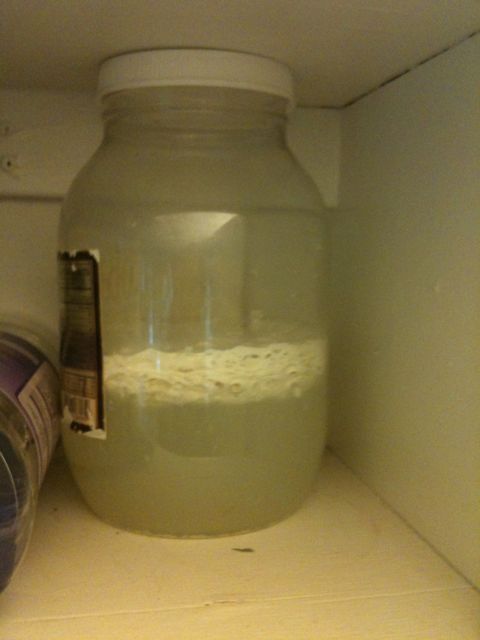
Rice water and milk serum fermenting 3 days - notice lid is only siting on top as to not build pressure.
5. sift off curd settlement and add to your soil or feed your animals it is good for their digestion, then there should be a light yellow serum left this is your unactivated serum.
6. Add 1 tsp molasses to feed and keep your bacteria alive and refrigerate. should have a shelf life of 6-12 months.
7. to activate microorganism activities and to room temperature non-chlorinated water at a ratio of 1 part Serum to 20 parts water.
8. feed to plants either straight into soil or follicular feeding.
Bokashi compost
Bokashi is a method of intensive composting. It can use an aerobic or anaerobic inoculation to produce the compost. Once a starter culture is made, it can be used to extend the culture indefinitely, like yogurt Culture. Since the popular introduction of effective microorganisms (IN), Bokashi is commonly ma
de with only molasses, water, IN, and wheat bran.
In home composting applications, kitchen waste is placed into a container which can be sealed with an air tight member. These scraps are then inoculated with a Bokashi IN mix. This usually takes the form of a carrier, such
as rice hulls, wheat bran or saw dust, that has been inoculated with composting micro-organisms. The EM are natural lactic acid bacteria, yeast, and phototrophic bacteria that act as a microbe community within the kitchen scraps, fermenting and accelerating breakdown of the organic matter. The user would place alternating layers of food scraps and Bokashi mix until the container is full.
Bokashi is moderately easy and cheap to make and there are many online video walkthroughs, you tube being a great place for a beginner to get some help, but here is a easy simple way to make Bokashi. Mostly made from wheat husks or wheat bran but I have heard of people using any thing from oats, barley, wood chips and even unsalted peanut husks.
Bokashi Grain ![]() 10 & 50 lb mix)
10 & 50 lb mix)
10 lbs wheat bran
4 tbsp EM serum
4 tbsp Molasses
10-12 cups non -chlorinated water
______________________
50 lb wheat bran
3/4 cup EM serum
3/4 cup Molasses
3-4 gallons Non-chlorinated water
air tight containers such as buckets with lids or storage totes will work too.
Something to mix in or on.
Procedure:
1. Add molasses to water and mix well.
2. Add Em serum
3. put wheat bran in mixing container or on something to mix on if one is making large amounts.
4. add liquid slowly and mix vigourously till all liquid is added
and all bran material is dampened. Bokashi mix should be equally damp and slightly sticks to itself.
5. For my ferment I do 5 gallon buckets and trash bags. Once my mix is ready I line a 5 gallon bucket with 2 trash bags and start scooping my Bokashi mix in side in layer, compacting and squeezing all the air out of my bran mix.(Keynote: Air will create the wrong bacterial culture and if you see black , green or gray mold throw your mix away, white is OK that is yeast.) Tie off bags and place air tight lid on bucket.
6. Store 14 days in cool dark area for fermenting.
7. open fermented mix(smell should be like apple cider sweet)and Sundry on concrete or on a tarp in the sun, time may vary depending on your location and time of year for drying.
8. Place in container for your Bokashi composting needs, flush down toilet to clear septic tanks, feed to live stock to better digestion.
Well this is a couple cheap easy trade secrets that should benefit your organic medical gardens Thumbs. Be green and frugal it is best we do thing for ourselves. If you feel the need to do more research look into organic farming with probiotics for plants.
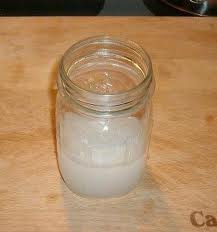
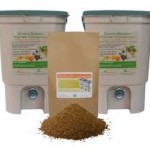
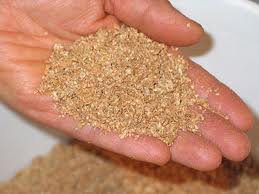
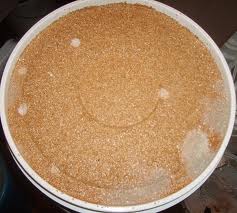






Wow, big mahalo for this info!
I have been buying EM-1 for years.
So grateful for your time and effort
in providing this info to the public.
Best Regards
Thanks. Life changing.
Thanks! D you have any information on the smallest ratio of EM to bran that will produce good bokashi?
Thank you so much for posting this. We have a growing farm on Maui and the Bokashi is going to come in handy for feeding the chickens, ducks, aquaponics fish & garden! Cutting down amendment costs is such a blessing…you are a blessing! Mahalo from the Ohana at Kane Farms.
Hello
How to make EM (Microorganisms)
rhs give me the formula ME PLEASE
Aloha! Mahalo for this! Just one question, is the EM part of this (once activated) the kind of EM you can also ingest as a probiotic supplement?
Mahalo!
wonderful…I tried & succeeded, I got the EM serum and extend it toEMAS & it work. Thanks…it change my life.
Yes very similar.
Glad to be of help.
Actually the yogurt on the top yes, but I would be-careful, but I have had friends eat it and not get sick. I feed it to my dog and one of my cats grind it too.
Hi, does the yellow serum left continue to grow. Just wondering what happens, do you need to make more as to none growth of serum?
do you have any recipes for the bokashi starter culutre, I like the thought of the longterm culture.
It is good for a certain amount of time, so I use it after 1 week just add molasses to activate the microorganisms, the sugar feeds them and makes them reproduce.
Aloha, well no longterm serum or culture, but if you take a 5 gallon bucket water and I like it Luke warm. Add 3-5 oz per gallon of em-1 and 1-2tbsp of molasses to water and you have your culturing liquid for fermenting your bokashi grain. This is the liquid you soak you grain with and then ferment.
You should write a book!! thanks rev!!
do you know much about fermented teas rev!
Yeah people tell me I should but this good enough
Well really not tormented but anarobic or soak teas are fairly easy, like lawn grass tea, get a nice big bucket of water and add your lawn clipping, no airdrome just let soak for at minimal a week but I like 1 month but everyone in a while stir and add some molasses it will become a grass soup! But I would cut this 1 part grass soup to 3 parts water
After opening my mandatory compost yard waste garbage can, and a million fruit flies blasted out-I started the process to make the EM-1 for the bokashi. Question: once it’s finished, is it like a sourdough starter where you can feed it, and/or if you take out a cup you replace it with a cup of something. How do you perpetuate it? Thank you for this inhome recipe.
Aloha,
Yes composting sure can have some critters! I do my composting outside. On the perpetuating, I have had a patient ad to it but with water and molasses but honestly it just gets thin if he was to add some to milk possibly cause remember em-1 is lacto bacillus(no milk! In lacto). There are other forms of on and in serums, there is a Japanese form of granular rice bacteria called Koji which one can use instead of fermented rice water if you would like to speed the process up a week.
Hi Rev. I forgot to strain the rice water so the sedament went in to the mix aswell will it matter? could that be the reason for the mould on the top? is the rice water mix the same thing you would do to make a tea scoby, people who sell tea scobys wont say how to start a soby, they say you need a culture(a scoby) and a cider vinigar or a bottle of already made scoby tea which you can make a scoby out of which forms in your first batch of scoby tea…
Neil no worries that mold will skim off when you sift the serum from the yogurt at top of your milk. This is fine we just want the serum on the bottom. As soon as u add molasses you activate that serum.
Oh yeah never used a scoby culture. But you can use Koji bacteria also as it is made from rice and is used to start fermenting in many Japanese dishes such as miso.
Rev,thankyou!!
Rev, Thanks a million super stoked to try this out …
much love from Colorado
I tried making EM & succeeded, it works wonders in my garden, I never had so many flowers in the backyard, Thanks a Million !!!